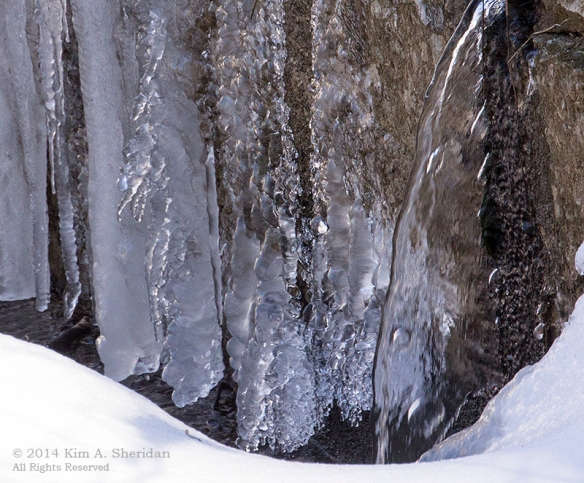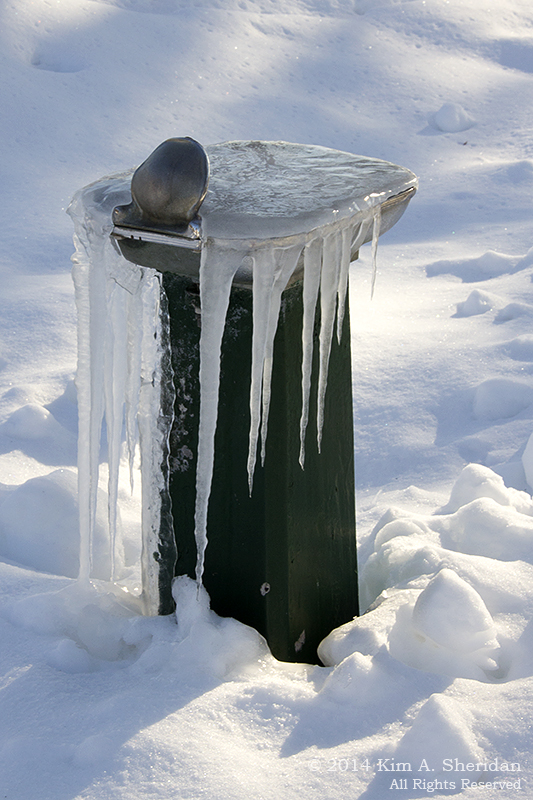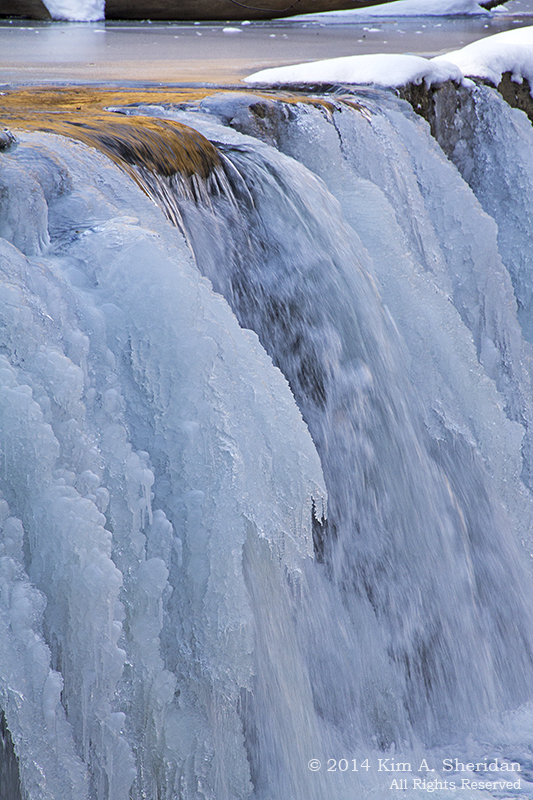 The old cliché says that the Inuit have fifty different words for snow. Around here this winter we have come up with some words of our own, none fit for polite company.
The old cliché says that the Inuit have fifty different words for snow. Around here this winter we have come up with some words of our own, none fit for polite company.
Philadelphia’s average snowfall is 22.2 inches, for a whole winter. So far this year we’ve had 58.4”, and there are still four weeks until spring.
 All that snow, combined with a long stretch of sub-freezing temperatures, has created some magnificent ice formations, especially near moving water. Dripping moisture builds strange sculptures on Ridley Creek, above.
All that snow, combined with a long stretch of sub-freezing temperatures, has created some magnificent ice formations, especially near moving water. Dripping moisture builds strange sculptures on Ridley Creek, above.
Intricate patterns etch cold surfaces on Crum Creek, below.
 Hoar frost on a leaf in Texas.
Hoar frost on a leaf in Texas.
 Loyal readers of The Wild Edge will remember this photo from our Ridley Creek geocaching adventure. This is called “needle ice”. It forms when the air temperature is below freezing, but the ground temperature is above freezing. Water forces its way out of pores in the ground by capillary action. When it reaches the air, it freezes. As more water keeps pushing out behind it, it forms into a growing column of ice. Needle ice is most common on steep slopes with seeping ground water, which is exactly where we found it.
Loyal readers of The Wild Edge will remember this photo from our Ridley Creek geocaching adventure. This is called “needle ice”. It forms when the air temperature is below freezing, but the ground temperature is above freezing. Water forces its way out of pores in the ground by capillary action. When it reaches the air, it freezes. As more water keeps pushing out behind it, it forms into a growing column of ice. Needle ice is most common on steep slopes with seeping ground water, which is exactly where we found it.

 Some ice formations are man-made. Bubble-wrap shaped ice on the wall of the Valley Creek dam, Valley Forge National Historic Park.
Some ice formations are man-made. Bubble-wrap shaped ice on the wall of the Valley Creek dam, Valley Forge National Historic Park.
 Whoops! Who left the water running?
Whoops! Who left the water running?
FUN FACT: Snowflakes form when water vapor condenses into ice. Snow crystals all start as simple hexagonal prisms. But as more water vapor condenses onto them and they continue to grow, they begin to grow branches. This creates an amazingly large variety of snowflake shapes, including columns, needles, plates, and dendrites. The classic six-armed shapes with side branches, like we cut from paper in school, are stellar dendrites. Stellar dendrites with an abundance of side branches are called fernlike stellar dendrites, for their resemblance to ferns.
 The dry powdery snow we had in January showed off several different snowflake shapes to good advantage. Which shapes do you see here?
The dry powdery snow we had in January showed off several different snowflake shapes to good advantage. Which shapes do you see here?
FUN FACT: What color is snow? Actually, snow crystals individually look clear. When they get together with their friends, the incoming light is reflected by the crystals and bounces around before scattering back out. Since snow generally scatters all wavelengths equally, it usually looks white.
But, it also happens that red wavelengths are sometimes absorbed by the snow, making the snow look blue or aqua. The deeper you look into a hole in a snow bank, the bluer it will appear. Since heavy, wet snow absorbs a lot of red light, we’ve seen a lot of blue snow in February. This is a close-up of a snow boulder left by a snow plow.
Also resplendent in shades of blue and aquamarine, the dam on Ridley Creek at Sycamore Mills was spectacular in late January. Bubbles and stalactites and little ice daggers, oh my!
 There’s a lot of water flowing behind the spikes and icicles formed here. More and more of it froze every day. In only one week, the ice would grow into the thick solid curtain seen below, dusted with a recent snowfall.
There’s a lot of water flowing behind the spikes and icicles formed here. More and more of it froze every day. In only one week, the ice would grow into the thick solid curtain seen below, dusted with a recent snowfall.
Fifty different words for snow? At the wild edge where the water runs, there’s just one word:





